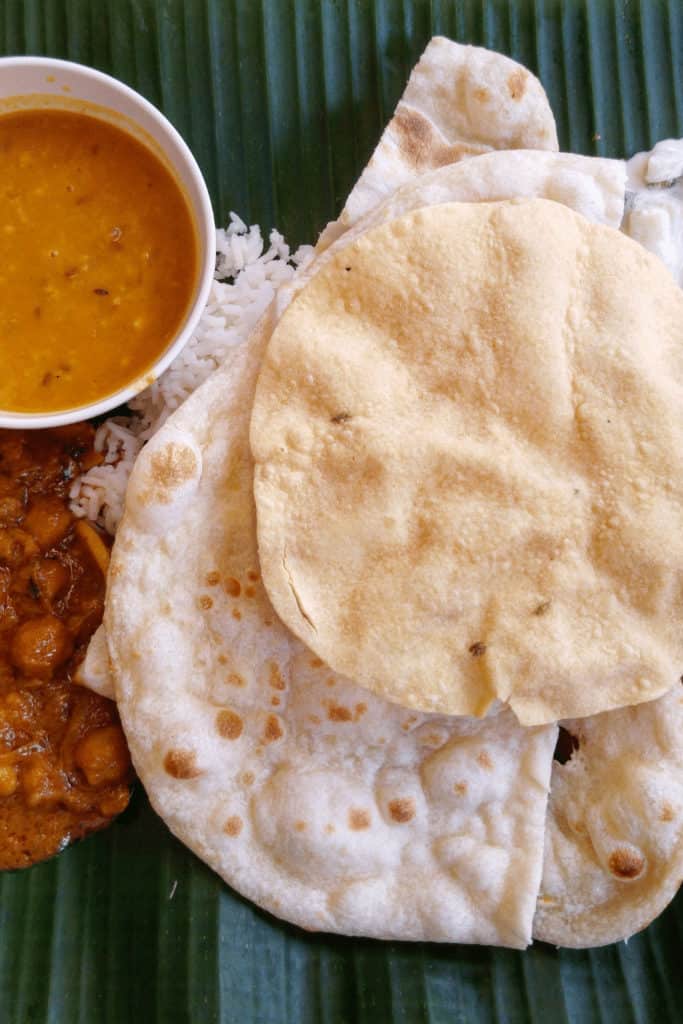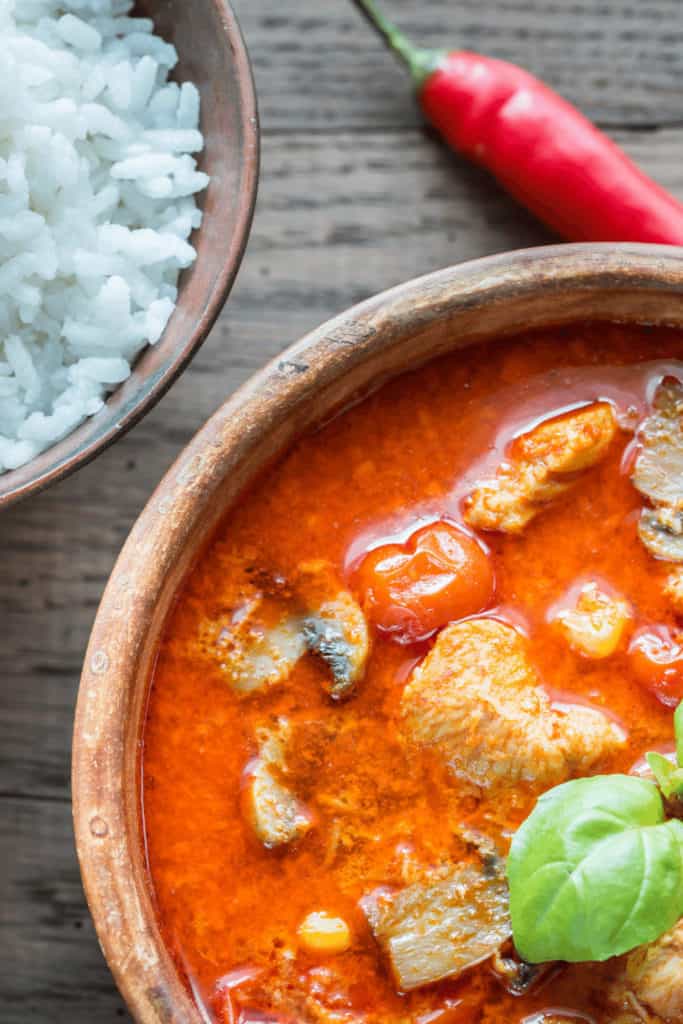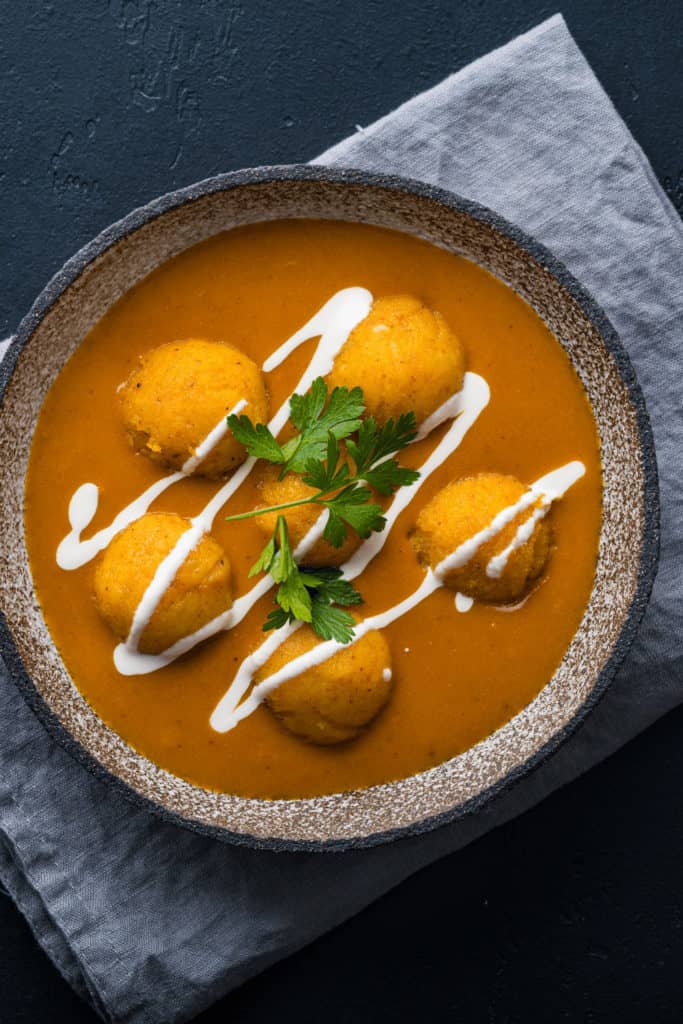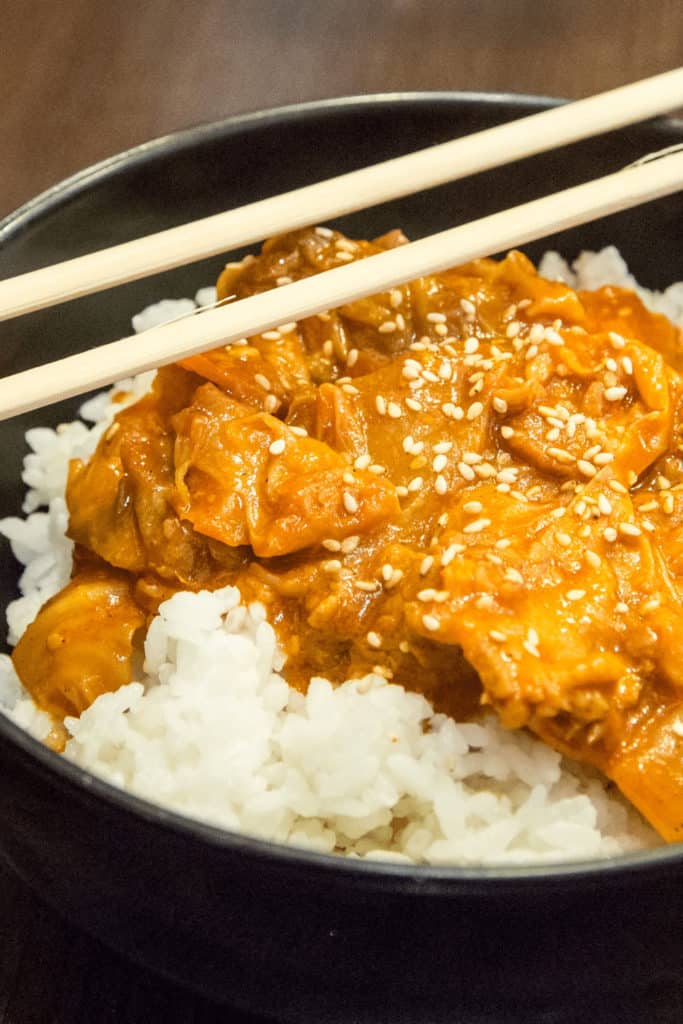How to eat curry?
You know the saying: There is more than one way to skin a cat? There is never only one way to do most things.
That includes eating curry.
You can choose your utensil and your accompanying dishes, which always add to the experience of the dish.
How to eat curry
Indian curry is like a stew and can be eaten with a piece of naan bread to soak it up. Sambals are commonly served with Indian curry. Chinese curry is more like a soup and is mixed with rice to make it solid enough to eat with chopsticks. Thai curry is best eaten with a spoon, while it is easier to use a knife and fork for Cape Malay curry. Both of these curries are commonly eaten with rice.

What eating curry is about
When you do talk about how to eat curry, it depends on what type of curry and if you are referring to how you literally eat it, or what you will eat it with.
You can use different utensils or even your hands. Then there are the dishes you can use to add to your experience of the dish.
Different types of curry
Different curries have their origins in different cultures.
Indian curry
When we think of curry, it is usually of curry originating in India.
This doesn’t refer to just one curry, but a whole range.
What they all have in common is a relatively thick consistency, similar to that of a stew.

Thai curry
Curries that originate in Thailand are quite light and made only with fresh ingredients.
The spices, herbs, and chilies are all fresh and not dried and which distinguishes the different curries.

Cape Malay curry
The type of curry that originated in the Western Cape of South Africa is known as Cape Malay curry.
The dish typically combines sweet and savory spices and includes dried fruit, mainly apricots.

Chinese curry
Curries that originate in China are more like gravy, with a thinner consistency, and are flavored with just a touch of mixed curry powder.
Other spices are added, like turmeric, coriander, and star anise.

Eating the different curries
Indian curry
You can eat Indian curries with a knife and fork, or a spoon.
However, to eat them in a more traditional way, use your hands and a piece of bread, because Indian curries are usually eaten with bread, roti, or papadums.
Naan bread
The most popular bread to eat with Indian curries is naan bread. It is a fairly dense leavened bread that is usually dipped in the curry.
Take a piece of thick, fresh naan, hold the dish with one hand and the bread in the other, and soak the bread in the curry.
Roti
Roti is a form of round, flat, unleavened bread. It is quite thin and is often used as a base to put the curry on. It can also be turned into a wrap to old the thick curry.
Papadums
Papadums are a very flat, crisp form of flatbread that cooks into a shallow bowl-type shape.
They are usually made from lentil flour, rather than wheat flour. When they are cooked, papadums can bubble slightly.
They are either broken up and sprinkled over the top of the curry, or they may be dipped into the curry.
Sambals
Indian curry is also traditionally served with a variety of sambals.
These are side dishes that you can use to add to your experience of eating the curry or to temper the heat of the curry a bit.
The sambals can have quite a spicy taste, to complement the taste of the curry.
They can also have quite a neutral taste, which cuts the sharpness of the curry slightly while allowing the subtle flavors through.
Easy and tasty sambal to make is chopped tomato, cucumber, and onion.
More neutral sambal is plain yogurt mixed with chopped cucumber.
Eating Thai curry
Like any dish, Thai curry could be eaten with a knife and fork but is more commonly eaten with a spoon and possibly a fork.
The spoon will be the primary utensil, with the fork just allowing you to push the curry and possibly rice onto it.
The most common accompanying dish for Thai curry is rice. It is a good complement to the rich flavors of the curry.
Rice has a very neutral taste and gives body to the curry, while not detracting from the many, subtle flavors at all.
Eating Cape Malay Curry
Cape Malay curry is quite thick and meaty and can easily be eaten with a knife and fork.
In fact, the fork will allow you to spear the individual pieces of meat or the dried fruit. You can also pick up a forkful of the dish.
The rice that Cape Malay Curry is usually served with makes the dish even thicker and easier to eat with a fork.
The complimentary dish is yellow rice, made with Basmati rice and colored with turmeric.
Other spices are also added and raisins can be cooked with the rice for flavor. They also complement the fruit in the curry.
Eating Chinese Curry
Because Chinese curries tend to be quite thin and juicy, they are possibly better eaten with a spoon, rather than a knife and fork.
A specific flat-based spoon can be used.
However, rice is a common dish to be eaten with Chinese curry.
When the two dishes are combined, you will have a more substantial dish that can be eaten with a fork.
However, why not eat the curry in the traditional way and use chopsticks?
Frequently Asked Questions About How to Eat Curry
Can you eat curry with your hands?
If you eat curry with your hands, you should use a piece of bread to soak up the juices and then eat the bread and curry. This is a manageable way to eat curry with your hands.
Are all curries eaten with sambals?
Sambals are more commonly eaten with Indian curries, but they do make tasty side dishes to any form of curry.
Conclusion About How to Eat Curry
All curries are not the same and all curries are not eaten in the same way.
Depending on what type of curry you eat, you can use a piece of thick bread in your hand, a fork, or chopsticks.
Remember to add some neutral starch and tasty sides to your meal.

